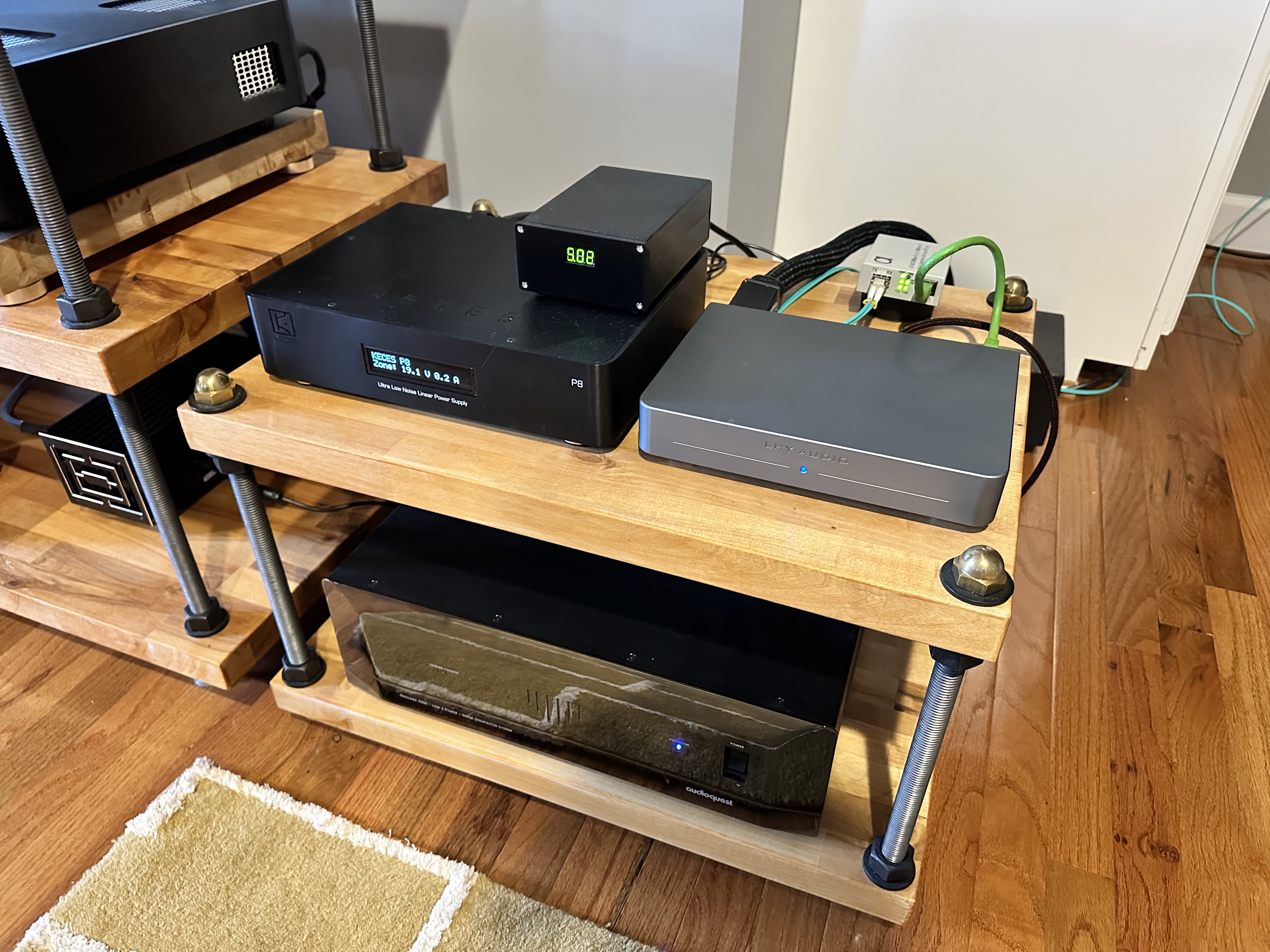In my ongoing experiments, now going on seven years, with network optimization for streaming I've discovered a number of optimizations that should work with any ethernet ISP.
I've tried a variety of ethernet cables, modems, routers, switches, FMC, ethernet filters, the following is what I've found to be most effective optimizations.
I'll start with ISP quality and speed. Recently I discovered 500mbps to be preferable to 300mbps. Along with upgrade in speed, modem capable of 1gb service replaced 600mbps, both have Broadcom chips and powered by same lps. Can't say which more responsible for improvement, speed or modem, presume speed has at least some role in ping time. As for ISP, there is importance in ISP server geographic location to you, shorter distances means lower ping time. For information as to how ping time affects jitter-https://www.fusionconnect.com/speed-test-plus/ping-jitter-test
Now for modems, modem close to audio system is most favorable, extending coax cable preferable to long ethernet cable. Coax more resistant to rfi and closer positioning to system means one can more easily afford top quality ethernet cable for modem to router connection. The modem should use Broadcom chipset vs. inferior Intel Puma, Broadcom chipset has lower jitter vs the Intel. Modem should be powered via external lps using quality DC and AC cables, lps to power conditioner for ultimate performance.
Following close positioning of modem to audio system, router should also be placed near modem in service of same advantage of making highest quality ethernet cable more affordable, in this case, modem to router and router to switches, streamers and NAS. Router should be powered with lps, this lps should be able to provide more amps than router requires in service of providing greater reliability, having lps with reserves of amperage means lps runs cooler, heat is enemy of reliability, longevity. As with modem, quality dc, ac cables and connection to power conditioner.
The next finding is new to me, provides very meaningful upgrade to streaming sound quality. Noise from wifi, injected both internally to router and externally with routers sitting close to audio systems has long been a concern to me. I have quality Trifield meter which measures rfi, router with operational wifi manufacture obscenely high levels of rfi, rfi is noise, noise is enemy of streaming at level we're talking about here. And its very likely the more wifi devices one has in home the higher the levels of rfi produced. This noise is then injected into following cables and streaming equipment. One may convince themselves FMC totally isolates this noise, and while correct, it doesn't mitigate the noise and masking going on within router. The only way to eliminate this noise is turning off wifi. And then, how to provide wifi for the many wifi devices we have at home? The answer is to connect a second router to the primary router. The primary router will only provide ethernet for streamers, switches and/or NAS in audio system, also for the second router. Second router provides wifi for the home, this scheme keeps vast majority of rfi out of audio system streaming chain. My own measurements find rfi significantly diminished in primary router, more than mulitiples of ten times lower vs wifi enabled. This was seamless install with the Netgear routers I'm using. There may also be value in provisioning higher quality routers. My new primary router, Netgear XR1000 is marketed as a gamer router, claims of lower ping time, latency, jitter vs other routers. Since my old router, Netgear RS7000 didn't have means to monitor ping time I can't provide evidence of this claim. Whatever the case, my XR1000 ping time test measurements are as follows, 25.35ms highest, 16.50ms lowest, this is A+ measurements against objective criteria. Ping time under load is download 25.93ms, upload 37.34ms, idle 17.31ms, this rates as A. My speed of 565gbps rates B grade, likely need 1gb service to get A here. At to how this all pertains to sound quality, adding up the upgrade in ISP speed and the off loading of wifi is without a doubt one of the most substantial, if not most substantial network upgrades I've experienced. While I long considered my setup as having a vanishing low noise floor, with this setup I heard a new level of vanishing if such a thing is possible. Even more astounding was a more analog like presentation, while I wasn't aware of even the slightest digital presentation prior, this upgrade certainly exposed it was indeed there. It seems logical to conclude there has been some lowering of jitter here.
And then we come to the ethernet filter. I suppose audiophile switches can be considered as one, then we have actual filters such as Network Acoustics Muon, my JCAT Net XE and others. I continue to believe these necessary even with the all measures above.
Optical conversion is also valid approach post router. While I found generic FMC somewhat effective, at this point I prefer ethernet. On the other hand I've not yet tried optimizing a fiber solution, for example two Sonore OpticalModules, both powered by lps, further upgraded with Finisar optical transceivers.
Assuming one has high resolving audio and streaming systems the above network optimizations should provide for substantial sound quality improvements. In my system, perception of performers in room has been taken to a new level of intimacy, meaning a more emotional connection to the performers and performance.
At this point, I consider network has been fully optimized, the only upgrade I'm aware of would be ISP upgrade to 1gb.



